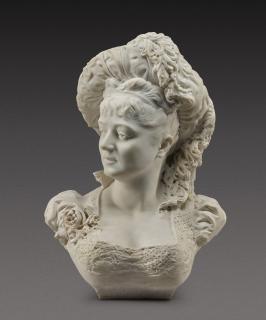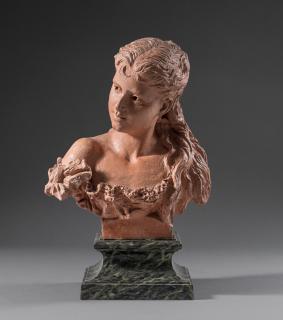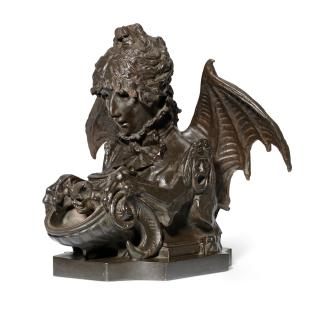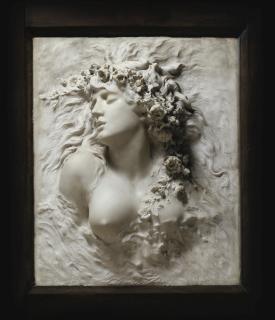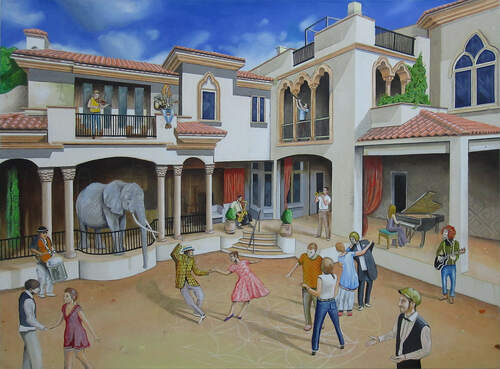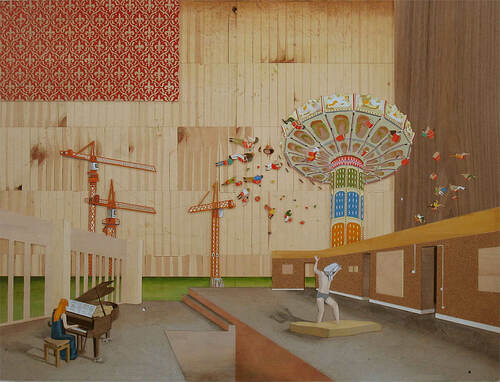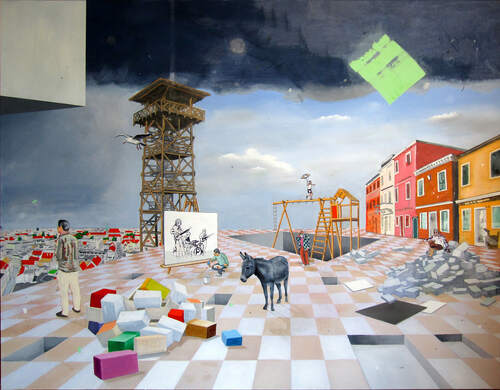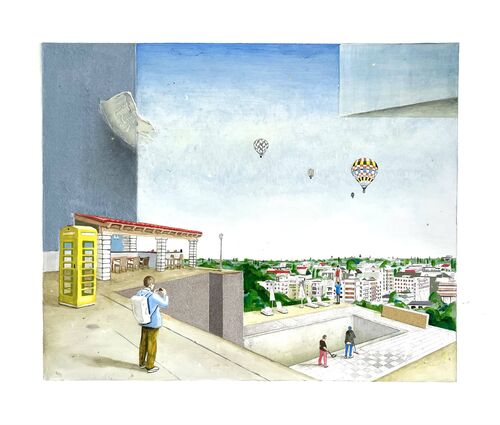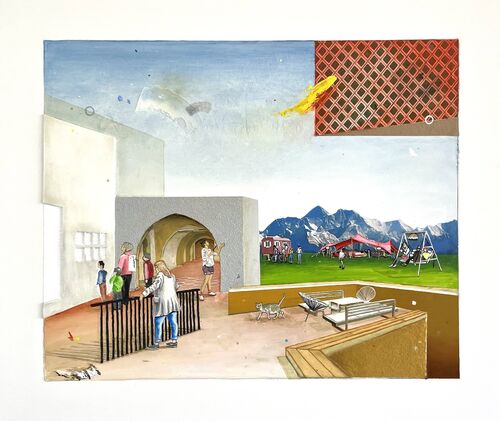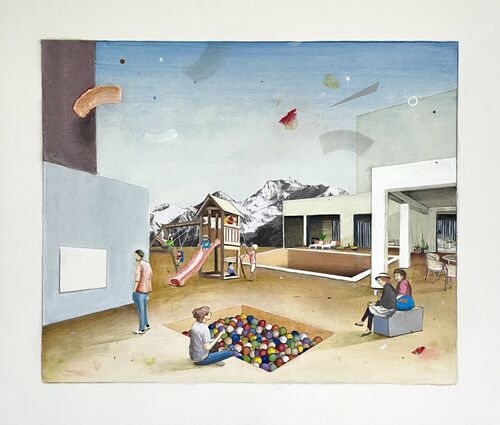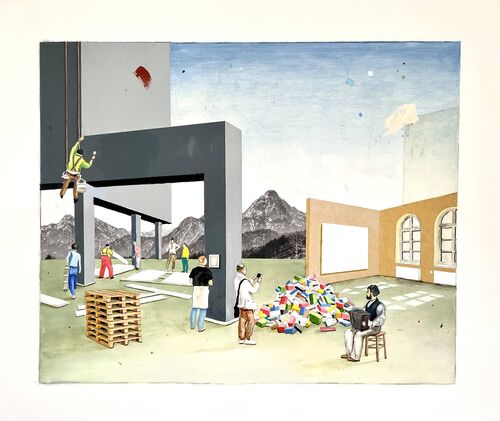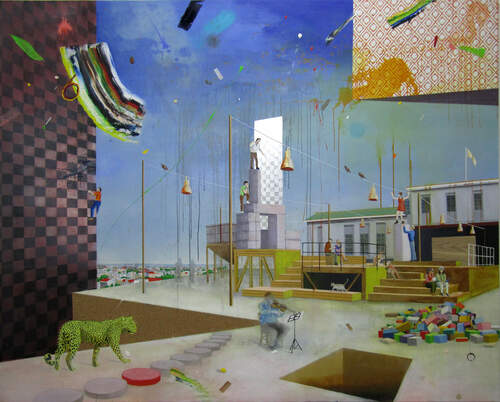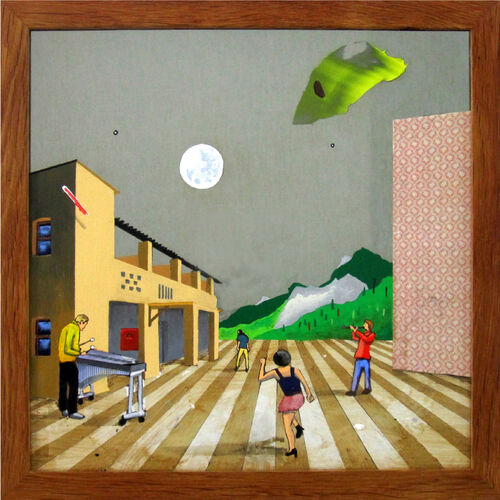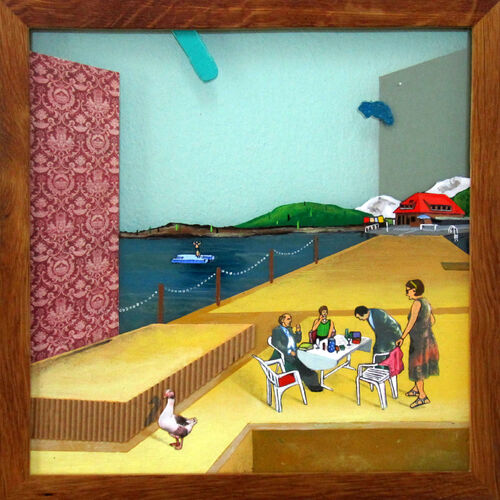Sarah Bernhardt Paris circa 1845 - 1923 Paris
The artist Sarah Bernhardt
- Parisian actress and artist of the 19th and early 20th centuries.
- Turned to visual arts during her time at the Comédie-Française.
- Lived with a prosthetic leg after an accident and acted for soldiers in World War I.
Sarah Bernhardt (1844 - 1923), born in Paris, lived more for acting than art. Her destiny led her to the Comédie-Française, a prestigious national theater, at the age of 14 - a privilege she enjoyed because her mother happened to have a liaison with Duc de Morny, a half-brother of Napoleon III. He made it possible for her to train at the theater. Bernhardt was born under the civil name Marie Henriette Rosine Bernardt. She gave herself her pseudonym »Sarah« before beginning her acting career. She played her debut role as the main character in Jean Racine's Iphigénie.
During her second period at the Comédie-Française, around 1872, Bernhardt turned to painting. Her desire for fine art resulted from the free time she suddenly had. She preferred to paint landscapes and lakes of Belle-Île. She learned her newfound expertise from her two friends Georges Clairin and Louise Abbéma. The Young Woman and Death (1878), a two-meter-high painting, was one of the first works Bernhardt exhibited publicly at the Paris Salon.
Sarah Bernhardt eventually began to delve into sculpture as well. Mathieu-Meusnier assisted her in acquiring the skills. She quickly sold her high-relief panel depicting the death of Ophelia; she soon designed a figure on the façade of the Monte Carlo Opera House for the architect Charles Garnier. She even received an honorable mention for the group of figures Après la Tempête - the original can be found today in the National Museum of Women in the Arts in Washington.
As both her stage and art careers flourished - she toured North and South America as well as Europe - she suffered a stroke of fate: a jump during a performance in Rio de Janeiro had treacherous consequences. Her knee suffered an injury, and Bernhardt's leg had to be removed. The new prosthetic leg did not stop her from joining the troops during World War I, playing at the front in tents or even in the military hospital, and touring the U.S. once again. On March 26, 1923, Bernhardt died in her hometown of Paris. She is buried in the Père Lachaise cemetery.
Die Künstlerin Sarah Bernhardt
- Pariser Schauspielerin und Künstlerin des 19. und angehenden 20. Jahrhunderts.
- Wandte sich während ihrer Zeit am Comédie-Française der bildenden Kunst zu.
- Lebte nach einem Unfall mit einer Beinprothese und schauspielerte für Soldaten im 1. Weltkrieg
Sarah Bernhardt (1844 – 1923), geborene Pariserin, lebte mehr für die Schauspielerei denn für die Kunst. Ihr Schicksal führte sie mit 14 Jahren ans Comédie-Française, einem renommierten Nationaltheater – ein Privileg, das sie genoss, weil ihre Mutter zufällig eine Liaison mit Duc de Morny, einem Halbbruder Napoleons III., einging. Er ermöglichte ihr die Ausbildung am Theater. Bernhardt kam unter dem bürgerlichen Namen Marie Henriette Rosine Bernardt zur Welt. Ihr Pseudonym »Sarah« gab sie sich vor Beginn ihrer Schauspielkarriere. Sie spielte ihre Debütrolle als Hauptfigur in der Iphigénie von Jean Racine.
Während ihrer zweiten Phase am Comédie-Française, um 1872, wandte sich Bernhardt der Malerei zu. Die Lust an der Bildenden Kunst resultierte aus der Freizeit, die ihr plötzlich zustand. Sie malte bevorzugt Landschaften und Seen der Belle-Île. Die neu gewonnene Expertise lernte sie von ihren beiden Freunden Georges Clairin und Louise Abbéma. Die junge Frau und der Tod (1878), ein zwei Meter hohes Gemälde, war eines der ersten Werke, das Bernhardt öffentlich am Pariser Salon ausstellte.
Sarah Bernhardt begann schließlich, sich auch in die Bildhauerei zu vertiefen. Mathieu-Meusnier unterstützte sie dabei, sich die Fertigkeiten anzueignen. Ihre Hochrelief-Tafel mit dem Tod der Ophelia verkaufte sie schnell; alsbald gestaltete sie eine Figur an der Fassade des Opernhauses von Monte Carlo für den Architekten Charles Garnier. Für die Figurengruppe Après la Tempête erhielt sie sogar eine lobende Erwähnung – das Original findet man heute im National Museum of Women in the Arts in Washington.
Als sowohl ihre Bühnen- als auch ihre Kunstkarriere florierte – sie tourte durch Nord- und Südamerika sowie Europa – ereilte sie ein Schicksalsschlag: Ein Sprung bei einem Auftritt in Rio de Janeiro hatte tückische Folgen. Ihr Knie erlitt eine Verletzung, Bernhardts Bein musste abgenommen werden. Die neue Beinprothese hielt sich nicht davon ab, sich während des Ersten Weltkriegs die Truppen zu bespaßen, an der Front in Zelten oder gar im Lazarett zu spielen und nochmals durch die USA zu touren. Am 26. März 1923 stirbt Bernhardt in ihrer Heimatstadt Paris. Sie ist auf dem Friedhof Père Lachaise beerdigt.
Sarah Bernhardt in a nutshell
Ophelia is a marble sculpture from 1880. It measures 70 x 59 cm and is, strictly speaking, a relief. Ophelia is a character from Shakespeare's Hamlet, she shows Bernhardt's close connection to the theater and acting. However, she herself, one of the greatest and most famous actresses of her time, never played this role. Ophelia is in a private collection in France.
Sarah Bernhardt is not only the most famous actress of her time, but was also a talented sculptor. Many of her sculptures thematize her work in the theater: they are busts of roles or of herself as mythological beings − so to speak in costume − like the self-portrait as a chimera.
Häufige Fragen zu Sarah Bernhardt
Ophelia ist eine Marmorskulptur von 1880. Sie ist 70 x 59 cm groß und genau genommen ein Relief. Ophelia ist eine Figur aus Shakespeares Hamlet, sie zeigt Bernhardts enge Verbundenheit zum Theater und zum Schauspiel. Sie selbst, eine der größten und berühmtesten Schauspielerinnen ihrer Zeit, hat diese Rolle jedoch nie gespielt. Ophelia befindet sich in einer Privatsammlung in Frankreich.
Sarah Bernhardt ist nicht nur die berühmteste Schauspielerin ihrer Zeit, sondern war auch eine begabte Bildhauerin. Viele ihrer Skulpturen thematisieren ihre Arbeit im Theater: Es sind Büsten von Rollen oder von ihr selbst als mythologische Wesen −sozusagen im Kostüm – wie das Selbstbildnis als Chimäre.

